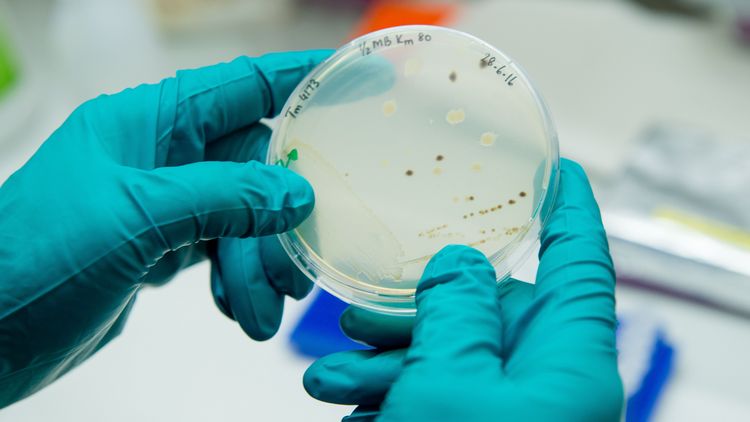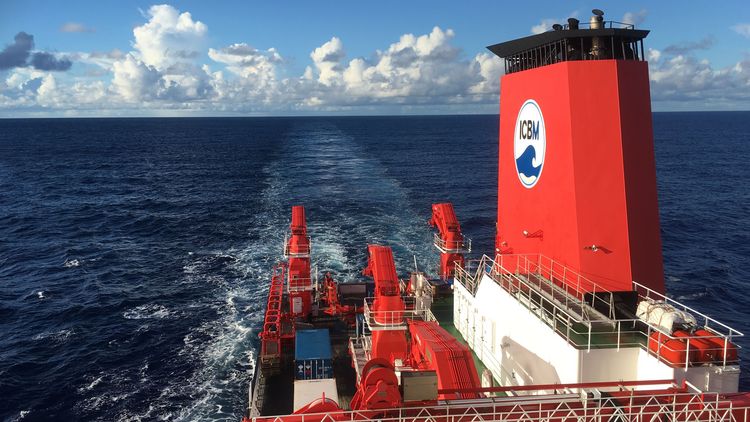Around 100 experts from all over the world gathered at the "Marine Microbiota" symposium in Oldenburg at the end of August. Here, the host of the event, microbiologist Meinhard Simon, explains why these marine bacteria are so important and how researchers are making unexpected discoveries about their interactions in the sea.
Prof. Dr. Meinhard Simon, you have headed the Collaborative Research Centre "Roseobacter" for almost ten years and spent countless weeks at sea on various expeditions with research vessels to gain a better understanding of these tiny sea dwellers and their traits. What is so special about these microbes?
As members of the bacterial community roseobacters are found in all regions and at all depths of the world's oceans, from the tropics to the polar seas and from the sea surface to the sea floor, in collections of unicellular algae, so-called phytoplankton blooms, and also on seaweed. They associate with various invertebrates such as bivalvia, planktonic crustaceans and fish larvae. Roseobacter bacteria also often occur in tidal flats. We and other scientists have discovered that in some places representatives of this group account for up to a third of the total bacterial biomass – and there are many different species among those we find.
Why are these bacteria so widely distributed and successful in the world's oceans?
They have a highly versatile metabolism which enables them to adapt well to different environmental conditions. We want to find out what the genetic foundations for this versatility are and how their metabolism works. To do this it is important to decode the corresponding genomes, in other words all the genes of an organism. Thanks mainly to our studies, around 600 Roseobacter genomes have already been decoded – and that figure is rising daily. This is more than for other marine bacteria. There are also around 200 species in microbiological strain collections. Incidentally, the name "Roseobacter" goes back to the first bacteria of this group that were isolated in 1991. It refers to the pink pigmentation that colonies of these bacteria display on the agar plate.
What role do these microbes play at the global level?
The bacteria of the Roseobacter group play a key role for example in the sulphur cycle: they produce a wide variety of organic sulphur compounds that regulate processes such as the formation of clouds. This in turn influences the weather and climate. We have also found out that bacteria from this group supply other bacteria and phytoplankton and seaweed with various vitamins, above all vitamin B12. Others produce highly effective substances with antibiotic properties.
Which of your findings in recent years surprised you most?
We knew that certain representatives of the Roseobacter group excrete vitamins and other chemical compounds such as sugar and amino acids during the growth phase. But we have now discovered that they also secrete certain intermediate products that develop during the biosynthesis of vitamins and other chemical compounds. These substances absorb other bacteria, meaning that there is intense chemical communication between the various bacteria and with algae. This was a new and unexpected discovery for us – and it shows that the coexistence of different bacteria in the sea is far more complex than we had assumed just a few years ago. Seawater brings bacteria much closer together than we had previously thought. These microbes have a highly developed common metabolism. The old concept of many different bacteria species competing with each other for nutrients has changed. Today we see bacterial communities as synergetic and cooperative communities.
What challenges do you face in your practical research?
We try to isolate interesting and representative bacteria from the Roseobacter group from the sea and grow them in the lab. We learn a lot about the group as a whole through experiments with these model bacteria provided they are grown under controlled conditions, breaking down certain nutrients and producing others. However, with a number of strains of these bacteria it has proven extremely difficult and even impossible to isolate them and cultivate them in the lab. With some, however, we have succeeded. Clearly the bacteria in the sea live in completely different conditions to those we manage to grow in the lab. So at this stage we still know too little about the metabolic processes of certain representatives of the group. Finding answers to these questions remains a major challenge.
Which research questions do you hope to find answers to in the future?
The funding of the Collaborative Research Centre will continue until the end of 2021. We want to continue discovering the secrets of the chemical communication between Roseobacter bacteria and phytoplankton. We are also analysing the data we gathered on the distribution, biodiversity and genetic traits of the Roseobacter group during two research expeditions in the Pacific, between New Zealand and the Bering Sea. Here too, we expect to gain many new insights and a better understanding of the ecology and biogeography of the Roseobacter group and all the bacterial communities in the vast Pacific Ocean.
Interview: Constanze Böttcher

![[Translate to English:] [Translate to English:]](/fileadmin/_processed/6/0/csm_Simon_portait_ds_8d99585c0f.jpg)

